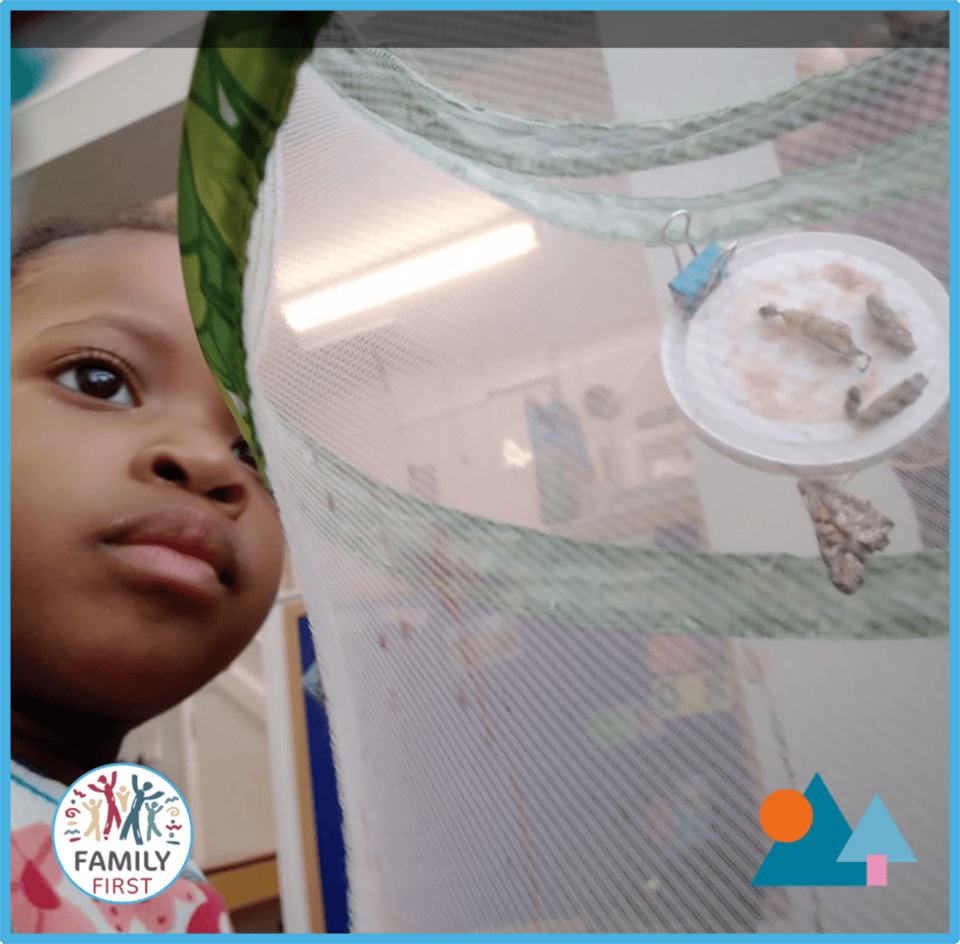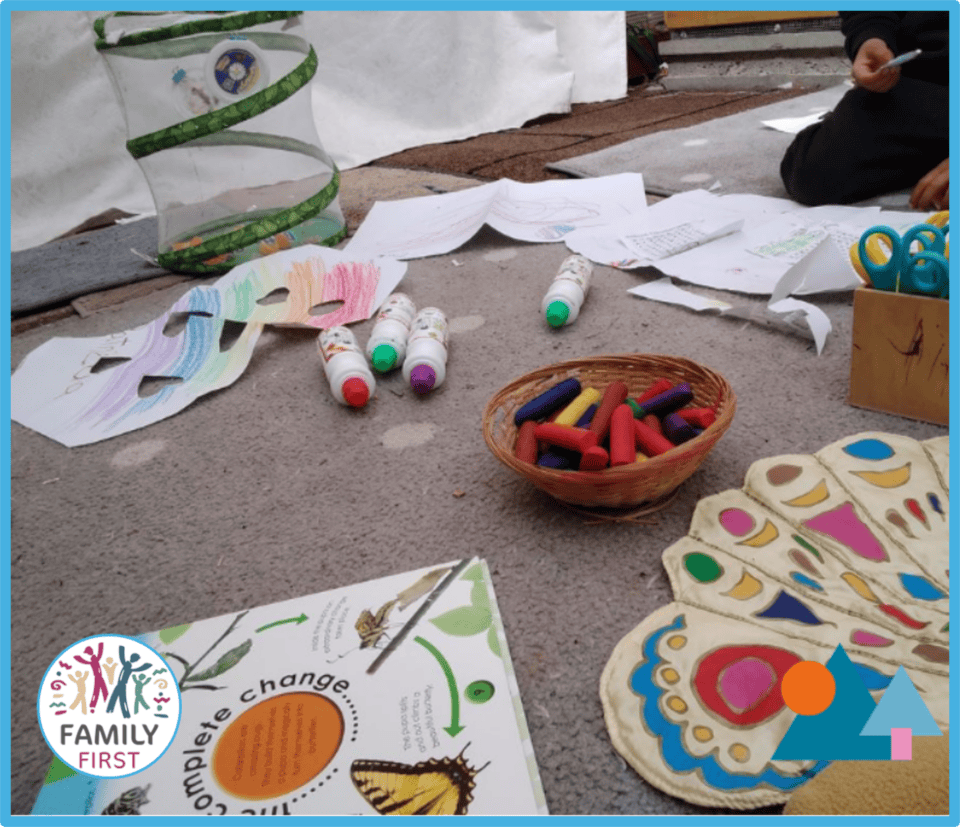This month at Rosewood Montessori Day Nursery & Forest School, our little ones had the joy of witnessing one of nature’s most beautiful transformations: the life cycle of the butterfly. Our journey began with the arrival of caterpillars, which sparked curiosity and excitement among the children. They eagerly took on the responsibility of caring for these tiny creatures, watching with anticipation as they grew and changed.

The highlight of our month was the emergence of our first Painted Lady Butterfly from its chrysalis. The timing was perfect; as our teacher brought the butterfly net to the table, the children watched in awe as the butterfly began to unfold its wings. This live experience was a remarkable moment for the children, bringing to life the concepts we had explored through books, models, and images.
The butterfly’s metamorphosis was not just a visual spectacle but also an educational journey that touched on various aspects of development. To deepen their understanding, the children engaged in a range of activities inspired by the butterfly’s life cycle.
Skills Development
Transforming into Butterflies: Our little ones transformed into butterflies through imaginative play. They counted the butterfly’s legs, cut cardboard to create their own, threaded the legs, and discovered that butterflies, like all insects, have six legs. This activity ignited their curiosity, leading them to count the legs of other insects in the garden.

Learning About Antennae: They also learned about antennae and other body parts, expanding their knowledge of insects and their characteristics.
Our butterfly project provided numerous opportunities for the children to develop a wide range of skills:
Motor Skills: The children enhanced their fine motor skills by holding pencils, cutting with scissors, using both hands to manipulate materials, and developing hand muscles through threading, cutting, colouring, and mark-making.
Self-Regulation and Teamwork: They practiced self-regulation, sharing, and teamwork, celebrating their achievements together and learning to recognise their individual progress.

Critical Thinking and Problem-Solving: When faced with challenges, such as making holes in their wings or threading strings, the children demonstrated critical thinking and problem-solving skills. They used available resources, asked for help, and collaborated with peers to overcome obstacles.
Curiosity and Scientific Thinking: Observing the caterpillars and butterflies up close fuelled their curiosity about nature. They asked insightful questions and marvelled at the butterfly’s ability to eat using its proboscis, a specialised tongue for sucking juice from fruits.
The Montessori Method in Action
Dr. Maria Montessori described young children as having “absorbent minds,” with an extraordinary ability to effortlessly and unconsciously absorb information from their environment. This period, known as the “sensitive period,” is when children are most receptive to learning through their senses and direct experiences.
Our month filled with first-hand experiences and sensorial activities exemplifies how we can foster intellectual growth and nurture a lifelong love of learning. By immersing our children in the wonders of nature, we not only enhance their understanding of the world but also strengthen their connection with it, a fundamental aspect of being human.
At Rosewood Montessori Day Nursery & Forest School, we are dedicated to providing enriching, hands-on experiences that support holistic development and inspire a deep appreciation for the natural world. This spring, our journey with the Painted Lady Butterfly has been a testament to the power of experiential learning and the joy of discovery.
